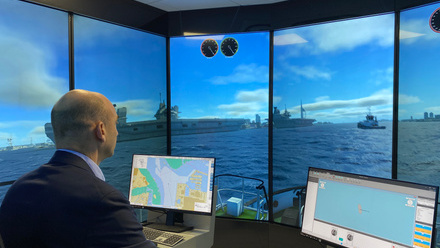A model future for tsunami forecasting
Numerical models can help us understand the physical characteristics of tsunamis and better predict their interaction with coastal regions, as well as inform damage mitigation strategies
“Models could be employed for emergency planning and decision-making, to estimate the potential loss of life and damage to property, and to plan clean-up operations”
Tsunamis are inherently unpredictable and the ensuing loss of life and destruction they inflict on coastal infrastructure and property is even harder to forecast. Additionally, of all natural disasters, they are typically the most devastating and costly. The 2004 Indian Ocean tsunami claimed 230,000 lives across 14 countries, while the Tohoku tsunami off the northern coast of Japan in 2011 caused a staggering US$235 billion worth of damage.
While the probability of such an unstoppable and catastrophic event is low, adequate risk assessment is nonetheless imperative for any major coastal project. Hydrodynamic models to simulate tsunami propagation are an invaluable tool for gaining insights into how a given coastal locality would be affected by the various physical properties of a tsunami and how to limit the potential repercussions.
Utilising the MIKE21 Flow Model, Dr Zaman Sarker (2018) from Royal HaskoningDHV, Peterborough, UK, demonstrated the value of such models as a tool for better understanding the consequences of different tsunami strength scenarios in the Arabian Sea. The region was struck by a devastating tsunami in 1945, claiming 4,000 lives, following a magnitude (Mw) 8.1 earthquake along the Makran Subduction Zone (MSZ). While it was previously thought the MSZ was not subjected to earthquakes greater than Mw=9.0, recent studies suggest they could be as high as Mw=9.2, presenting a significant threat to the adjacent coastlines of Pakistan, Iran, Oman and India.
Previous modelling in the area has focused on the creation of localised tsunami inundation and hazard maps of the south-eastern Iranian coastline. To highlight the potential of modelling to present a fuller picture, Sarker showed how MIKE21 could predict the height and forward velocity of tsunami waves for the entirety of the Arabian Sea.
Using magnitude figures derived from probabilistic tsunami hazard assessments studies in the area for 1 in 100 years and 1 in 1,000-year earthquake recurrences, five different scenarios were simulated. Three Mw=8.4 (1,000-year) runs were conducted, with different epicentre sites along the MSZ fault, to test the sensitivity of earthquake locale on the resultant tsunami. Additionally, singular Mw=8.0 and Mw=7.8 scenarios were simulated, to investigate the implications of earthquake magnitude on tsunami propagation.
Unsurprisingly, given their close proximity to the MSZ, outputs suggested that areas to the north of the fault would be worst affected. The Iranian-Pakistani coastline, particularly Pasni, could experience wave heights of 4.4m-5.5m, with maximum current speeds of up to 3.2m/s expected to hit the coast within just 37 minutes of earthquake occurrence.
Conversely, areas to the east and west of the fault would suffer less severe effects. Averaged model outputs advised that the Gujarat coastline would witness a sea level rise of 0.31m, while Muscat would observe a 0.38m rise – both accompanied by significantly slower current speeds (0.12m/s and 0.15m/s respectively).
Earthquakes centred on the western segment of the MSZ fault were shown to produce a worst-case scenario, generating higher sea-level rises and much stronger currents than in other locations – including that of the 1945 earthquake fault area.
By utilising knowledge on how coastlines along the Arabian Sea would be affected by a tsunami event and incorporating it into all stages of coastal build projects, such computer models could significantly aid the creation of robust guidelines for coastal and marine structures. Such guidelines would help reduce the scale of tsunami damage, both by advising structural design thresholds and in determining the most appropriate coastal defence structures for a specific region, such as seawalls, offshore barriers and nearshore breakwaters.
Additionally, these models could be employed for emergency planning and decision-making, to estimate the potential loss of life and damage to property, and to plan clean-up operations. This could be built into models to test structural stability and resistance to tsunami wave forces and overtopping rates of defence structures.
Furthermore, the author suggests this methodology could be applied to other at-risk areas worldwide to help advise future tsunami mitigation procedures.
This is a summary of a paper entitled ‘Numerical modelling of tsunami in the Makran Subduction Zone – A case study on the 1945 event’ published in the Journal of Operational Oceanography (JOO). You can subscribe to the journal here.






